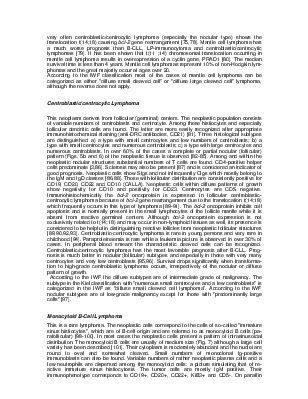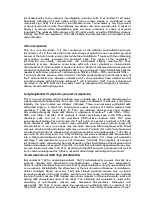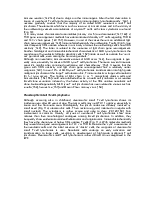







Histopathology forms the basis for the diagnosis, classification, treatment and prognosis of non-Hodgkin malignant lymphomas. Nowadays several reliable methods are being used in the pathology laboratories for the identification of the various cell types of the normal lymphoid tissues and their neoplastic counterparts; such methods are aimed at a better understanding of the nature of the malignant lymphomas and their reasonable classification. They include classic morphology, histochemistry, immunohistochemistry, image analysis/ flow cytometry and molecular pathology techniques such as gene rearrangement methodology, polymerase chain reaction (PCR), in situ hybridization and DNA clonality. Morphology is the mainstay of the malignant lymphoma examination process. It includes the cell morphology itself as well as the patterns of homing of either T or B zones of the lymphoid tissues by the neoplastic cells. Although cell morphology can be used to identify accurately only some cell types (e.g. plasma cells), in most instances it can provide substantial information on the B or T-cell nature of the lymphomatous cells. It is undoubtedly sufficient to distinguish substantial morphological categories of malignant lymphoma (e.g. centroblastic/centrocytic, lymphoplasmacytoid/cytic, and some types of peripheral T-cell lymphomas). It seems unreasonable to use more sophisticated methods of investigating lymphomas when they are not preceded and supported by the data of the traditional morphological methods which are more simple, inexpensive and offer significant directory possibilities. Cytochemical and histochemical (on frozen or paraffin sections) enzyme stains are useful to reach a differential diagnosis. Acid phosphatase, acid non-specific esterase, chloroacetate esterase and terminal deoxynucleotidyl transferase (TdT) are the most valuable ones. Not only mere enzyme positivity but also the pattern of their intracellular distribution is of importance. For example acid phosphatase and acid non-specific esterase are negative or fine granularly positive in B cells and strongly and diffusely positive in histiocytes. T lymphocytes show a focal spotty positivity for both enzymes. In particular, acid phosphatase is present in the lymphoid cells of the central lymphoid organs (e.g. thymocytes) and in peripheral T-cell lymphocytes as well, while acid non-specific esterase characterizes only the peripheral T lymphocytes and mainly CD4 helper T cells. Chloroacetate esterase positivity is expressed by cells of granulocytic series and mast cells. TdT characterizes the lymphoid cells of thymic and prethymic stage as well as those of Pre-B type. These enzyme staining are being applied less and less and are substituted by the immunohistochemical use of monoclonal antibodies either against enzymes or, more importantly, against epitopes characterizing various cell categories of lymphocytic, monocytic or even myelocytic origin. Of great help in the differential diagnosis of malignant lymphomas is the immunohistochemical demonstration of various surface or cytoplasm markers: immunoglobulins, enzymes such as TdT, lysozyme and elastase of leukocytes as well as antigens characterizing various categories of cells (e.g. antigens of lymphocyte differentiation, antigens specific for T or B cells, antigens of monocytes/histiocytes, CALLA, HLA-antigens, antigens of IL-2R, TCR etc). It must be emphasized that new monoclonal antibodies are being produced that recognize special cell subcategories such as the follicular center lymphoid cells, the helper (CD4) and suppressor (CDS) T cells, the follicular dendrite cells (FDRC), the interdigitating reticulum cells (CD6), the NK cells (CD57), etc. In addition, monoclonal antibodies which can recognize on paraffin sections epitopes characterizing B or T cells, dendritic cells and monocytes/histiocytes (e.g. CD20, LN1, LN3, UCHL1, beta F1, CD21, CD68, MAC etc.) become more and more numerous.
Even with the use of various specific monoclonal antibodies a certain percentage of malignant lymphomas remain negative for both B and T-cell markers, thus deserving the designation of "null cell" lymphomas. The use of molecular pathology techniques [12-15] offers a substantial aid in such instances as well as in problems concerning cell origin, aetiopathogenicity and prognosis. In fact, gene rearrangement analysis has shown that many of the "null" lymphoblastic malignant lymphomas have rearrangements of the immunoglobulins genes while a considerable number of "null" large cell lymphomas have T-cell receptor rearrangements . In-situ hybridization is useful for the demonstration of specific RNA or DNA corresponding to cellular or viral components (Igs-RNA, EBER and EBNA for EBV etc.). It must be emphasized that the polymerase chain reaction (PCR) and in-situ hybridization can in many instances be applied to paraffin-embedded material [17,18]. Moreover, the PCR technique can be used to raise the sensitivity of in-situ hybridization in paraffin sections.
An applicable classification should combine scientific correctness with a high prognostic value, a high rate of reproducibility and significant clinical and epidemiological correlation. During the past few decades several more or less successful attempts to classify lymphomas have been made. Two classifications prevail: the Kiel classification and the international working formulation, IWF . The use of one or both of these classifications is necessary since pathologists and clinicians require a common reference. However, it must be stressed that in many cases the two classifications are not automatically interchangeable and therefore the degree of the pathologist's experience is decisive. Both classifications apply better to lymph node malignant lymphomas, since the extranodal lymphomas frequently display significant peculiarities in their morphology, phenotype, genotype and clinical behavior. Such cases are lymphomas of the gastrointestinal tract and the so-called MALTomas in general , lymphomas of the skin [25,26], large cell lymphomas of the mediastinum , and lymphomas of the nasal cavities [29].
Уважаемый посетитель!
Чтобы распечатать файл, скачайте его (в формате Word).
Ссылка на скачивание - внизу страницы.